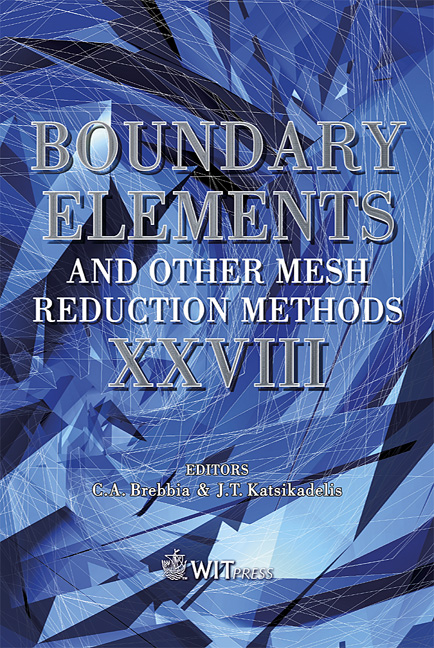Penalty Formulation Of Damage In Classical Composites
Price
Free (open access)
Transaction
Volume
42
Pages
10
Published
2006
Size
520 kb
Paper DOI
10.2495/BEM060331
Copyright
WIT Press
Author(s)
P. Procházka & J. Matyáš
Abstract
The problem of damage in composites has long been studied by many authors. This paper is going to bring a new formulation, which is based on a combination of penalty and boundary element formulation. It is proved that this approach offers a combination of two very powerful tools. The penalty formulation can be very easily realized from the engineering point of view. It starts with artificial spring realization of contact. Such visualization provides a large range of different technical applications, involving simple and multiple coatings, artificial lay-out of contacts between fibers and matrix, and such like. The boundary element method, on the other hand, is very suitable for solving contact problems. The only problem when using the BEM is the nonlinear behavior of the matrix. Nevertheless such hurdles can be overcome by a well known trick: the introduction of a polarization tensor. By virtue of this tensor the influence of the fiber is eliminated (assuming the elastic behavior of the fibers) and the matrix is the only domain, which can be described as plastic. Moreover, attempts have shown that the plastic zones are concentrated only in small areas and a fine discretization of the domain of matrix is concentrated into these zones. A couple of examples accompany the theory. Keynotes: classical composites, damage at interfacial zone, penalty formulation. 1 Introduction In this paper a problem of debonding of fibers from matrix, the influence of loading choice, prevailingly in normal direction, and a range of damage along the interface of phases are studied. The generalized Mohr-Coulomb interfacial conditions are taken into account including the tensile stresses at the fiber-matrix interface to be excluded. The loading is introduced in the classical way in such a
Keywords
classical composites, damage at interfacial zone, penalty formulation.





